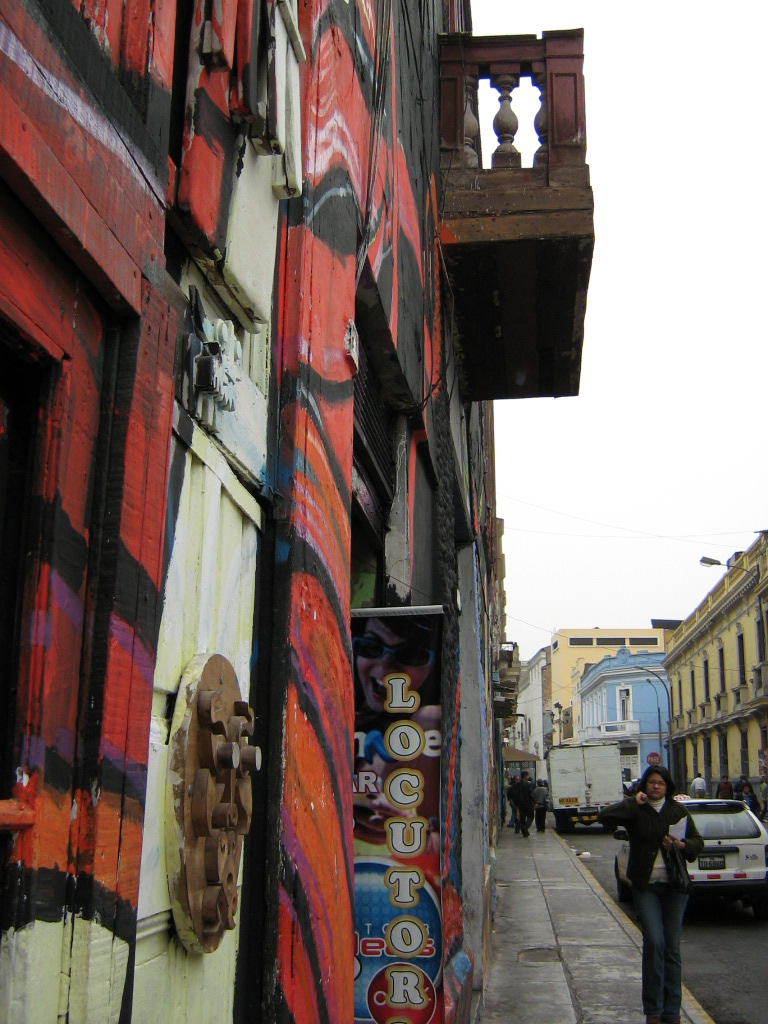

Lima, street art
Next day afternoon, I caught an overnight bus to Cuzco (22-23 hrs, ear plugs recommended for loud Hollywood B-movies dubbed in Spanish). Discussion with my neighbor, a young engineer, ranged from the U.S. election (he likes Obama) to the geology/climate of Peru (his specialty) and the political/economic situation in Peru (too much corruption and poverty). The bus arrived in Cuzco around noon, rising from Lima's near sea level to about 3400 meters above sea level in the Andes mountains. I avoided two touts that claimed no bus goes to Puerto Atalaya (they wanted me to stay at their hotel) and found a taxi driver to take me to where the bus to Puerto Atalaya leaves. There we were told that the bus had already left, and that the next bus leaves 3 days later, but there were cargo trucks leaving later in the day. The taxi took me to a place where cargo trucks gather to load and offload and found a Volvo truck headed for Puerto Atalaya. The driver, Pocho, accepted to take me on the trip (for 20 soles, about 7-8 US dollars). Nearby is the colonial-era San Sebastian cathedral, undergoing restoration, anchoring a pleasant plaza that looks out to the surrounding mountains. At a family-run cerviche restaurant (Pelican) on the plaza I had a most amazing lunch -- minestrone soup; trout, breaded and fried, served with fresh tomato, lettuce, and some kind of rice pilaf; and mora pudding for dessert -- all for only 3 soles! Children came by after the school day and a group of local volunteers were receiving instructions on repainting the railings around the plaza -- a real sense of community there.
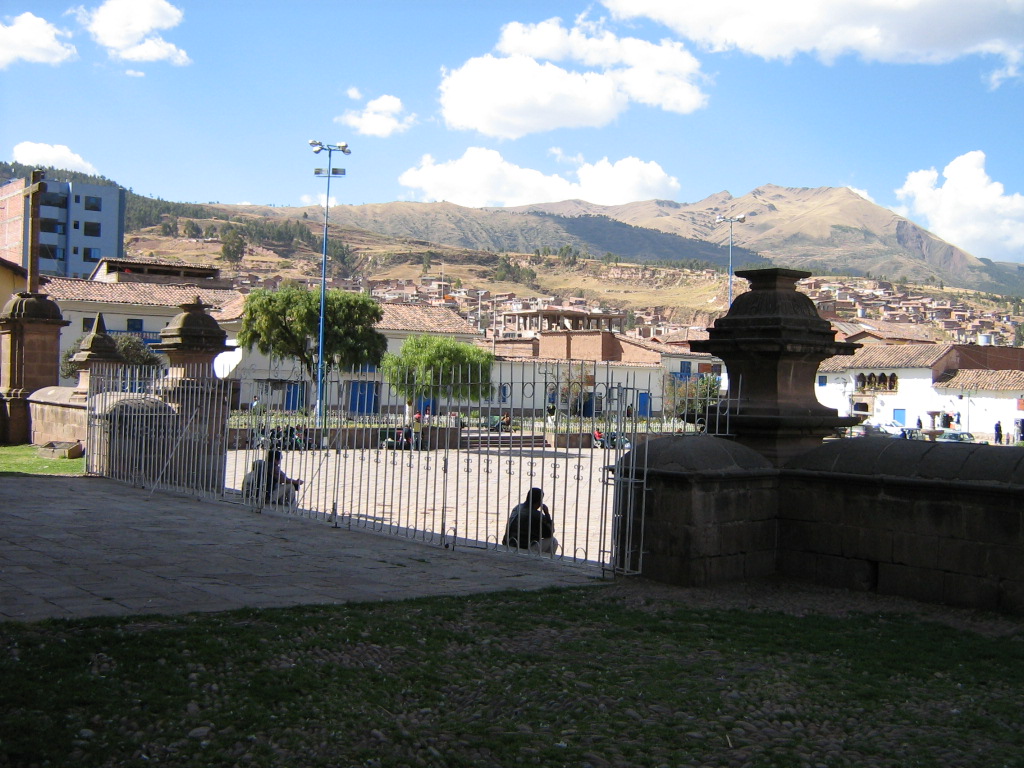
Cuzco, San Sebastian plaza
After Pocho loaded the truck full of coca-cola and other cargos, we were finally ready to leave at around 8 pm, just as the air began to chill in the Andes. Sharing the truck ride with me were Fernando and his wife, who were bringing construction materials down to his family home in the Amazons. They proposed that we have dinner first and meet up with the truck later down the road. After a meal of baked chicken, cole slaw, and french fries (Peruvian style) and a long wait at a pre-arranged rendez-vous spot, the truck came and we climbed on to the back, above the cargos. The experience of lying on ones' back, feeling the rushing cool wind on the face and the cargos rattling/shifting beneath as the truck motors along, and looking up to see the brilliant Andean night skies above .. feeling both enthralled and exhilarated. Some time in the night, the truck stopped to rest somewhere in the mountains, leaving just the sound of the forest and stream, the scent of pine or eucalyptus in the air, and a sky full of stars.
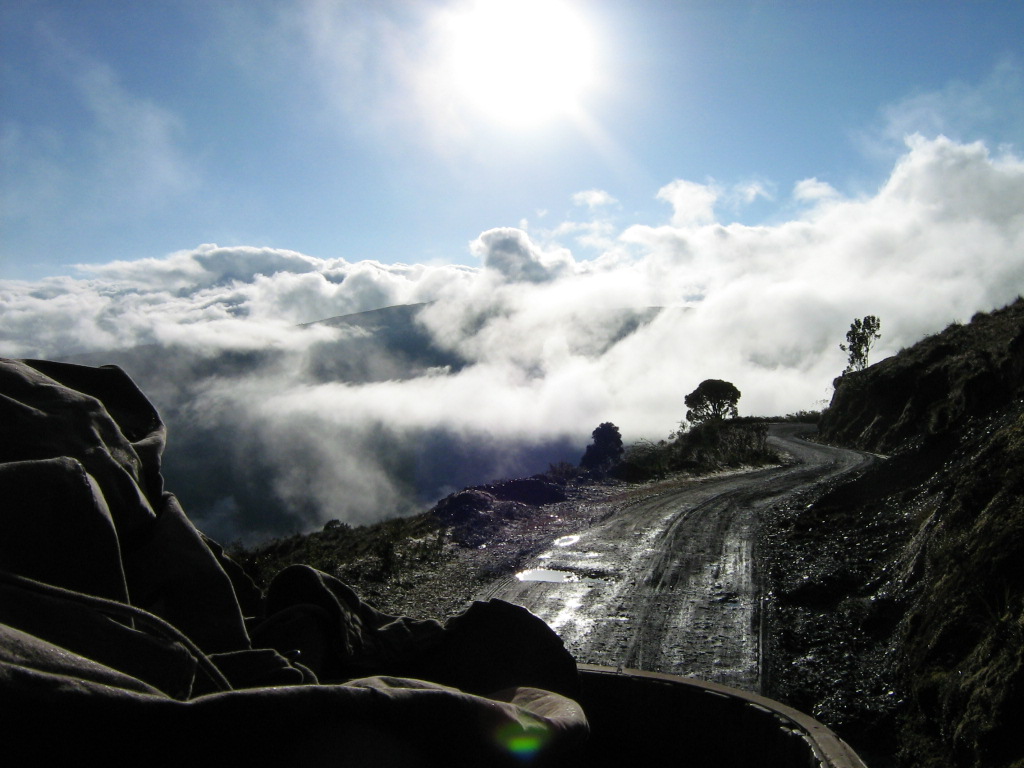
Descent from the Andes to the Amazon
The Andean night is cold, and I was grateful to my companion for lending me a blanket. Early morning next day, the truck began its slow descent into a sea of clouds in seemingly endless hairpin turns. The views were constantly changing (and breathtaking), as were the plant and bird life. Apart from the treacherous road condition (unpaved and often wet, muddy, and narrow), overhanging branches, thorned bamboos, and low tunnel ceilings are other hazards when riding on the back of a truck, though one was rewarded with amazing panoramic views. Fernando grew up in that part of the Amazons and shared his knowledge of the native plants and wildlife. He currently works as a cook for a tour company, but would like to be a tour guide some day (if he can improve his English). We came across women picking coca leaves asking about the police (it's illegal to pick coca leaves). Where we stopped for lunch, coca leaves were being dried in the open (likely illegal too). A boy told me that they killed a 'tigre' (which he probably meant jaguar) recently.
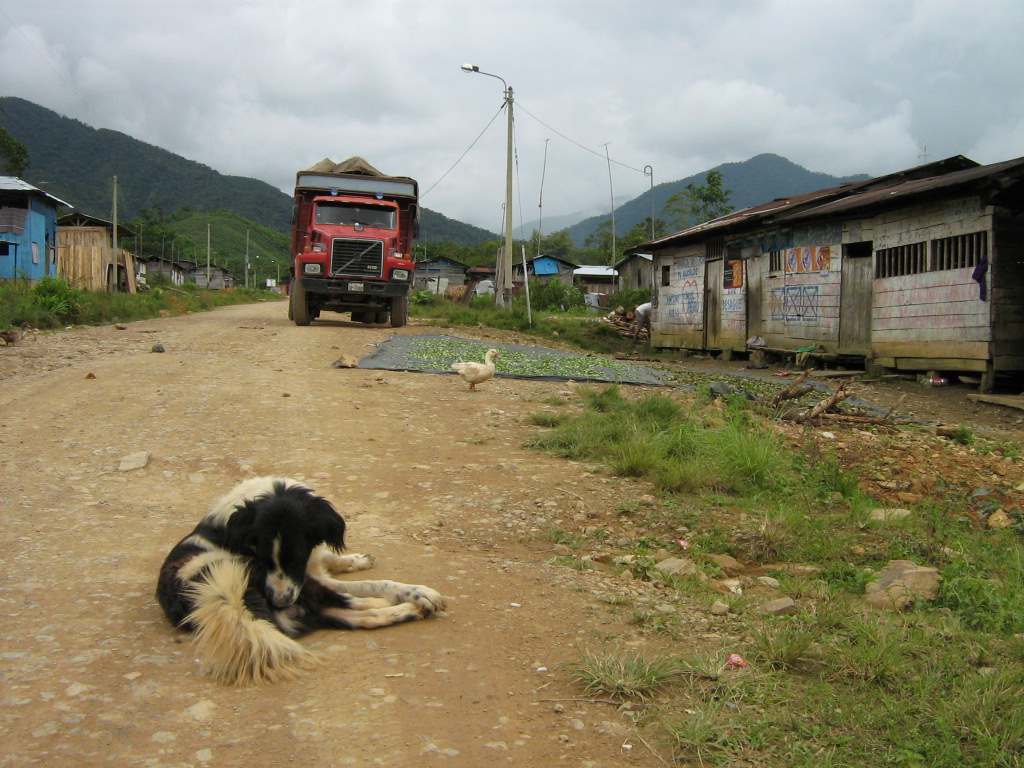
Truck stop, Amazon style
We arrived in Puerto Atalaya at about 5 pm. The entire journey took most of a day and night (21-22 hours), with stoppages in various places to unload cargos -- a good way to experience village life. I assembled my kayak at the village's football/soccer pitch, next to the river, and camped there overnight. I also bought more bottled water and provisions (crackers, platanos) at the village store, manned by a charming little girl (who called on her mother to help with tallying the prices) and her friend (who wanted to know if I know kung fu).
.
.
.
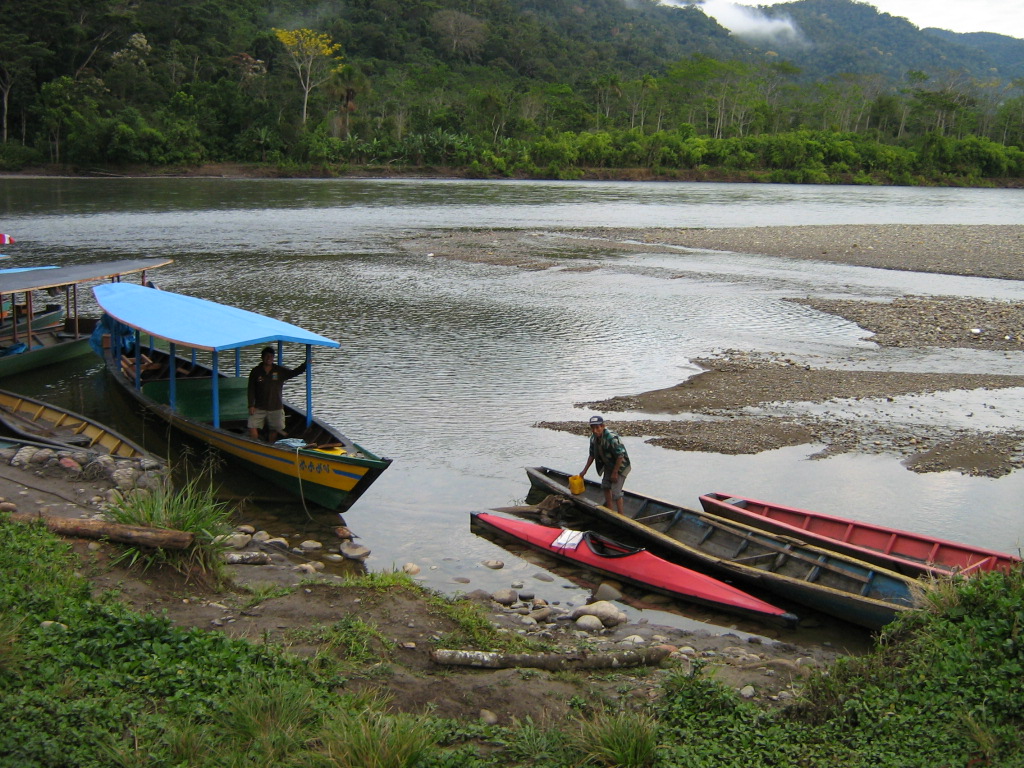
Rio Madre de Dios, Day 1
Puerto Atalaya
In the morning, I paddled off. The current was swift and, this being the dry season, there were many exposed rocks and shoals that need to be avoided. Through its course, one feels a closer connection with the river.
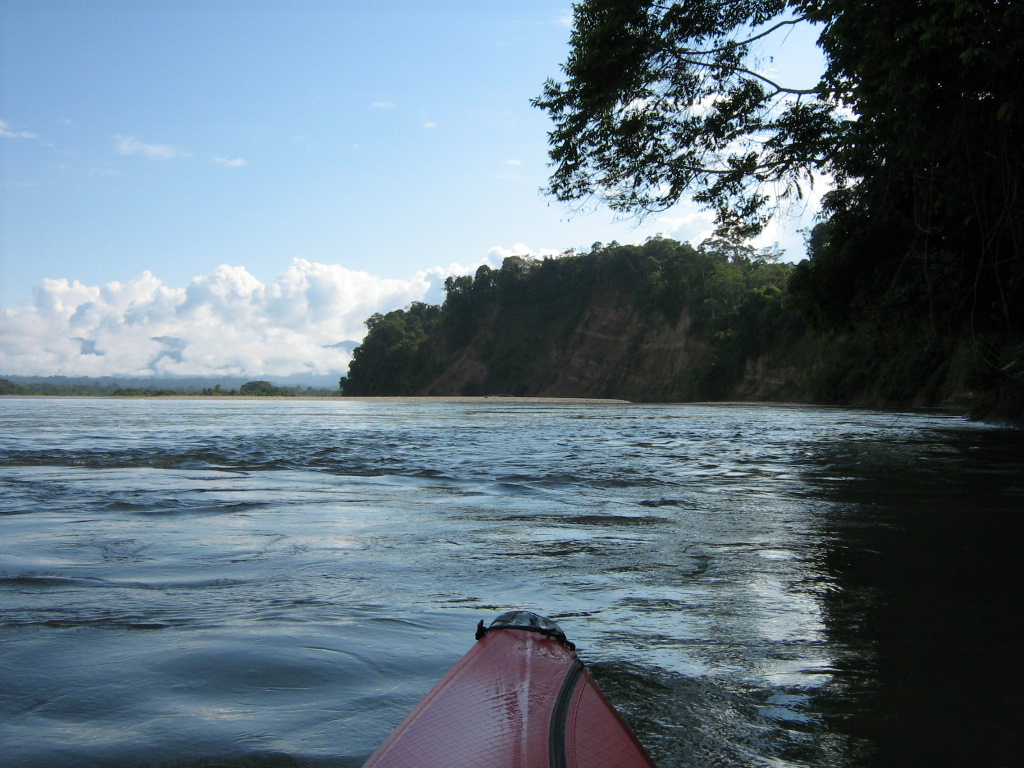
Trees of all shapes rose on both shores. Parrots, macaws, terns, and vultures flew overhead. I camped on a sandbank. A beautiful sunset welcomed my first night in the wilderness.
.
.
.
.
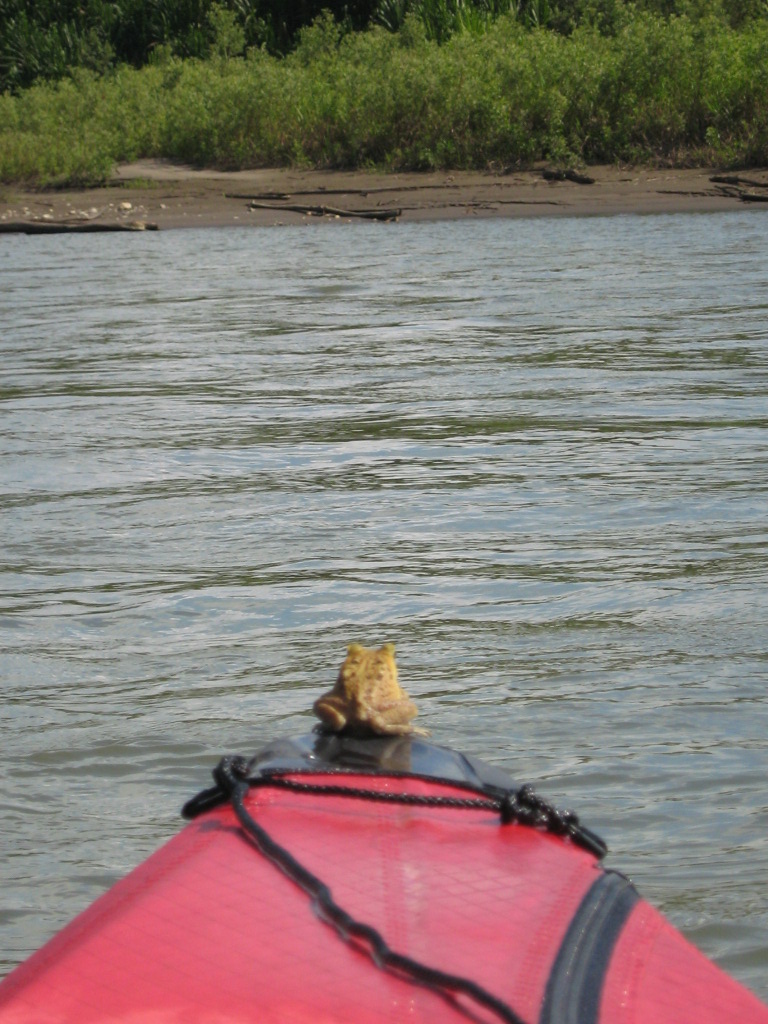
Rio Madre de Dios, Day 2
A stowaway
While kayaking, I felt something wet moving inside my kayak. It turned out to
be a frog, which must have jumped inside overnight unnoticed. I caught it
and put it on the kayak deck. After eyeing me and then the surroundings, it moved to the front end of
the kayak and, after a pause, dived in and swam for shore.
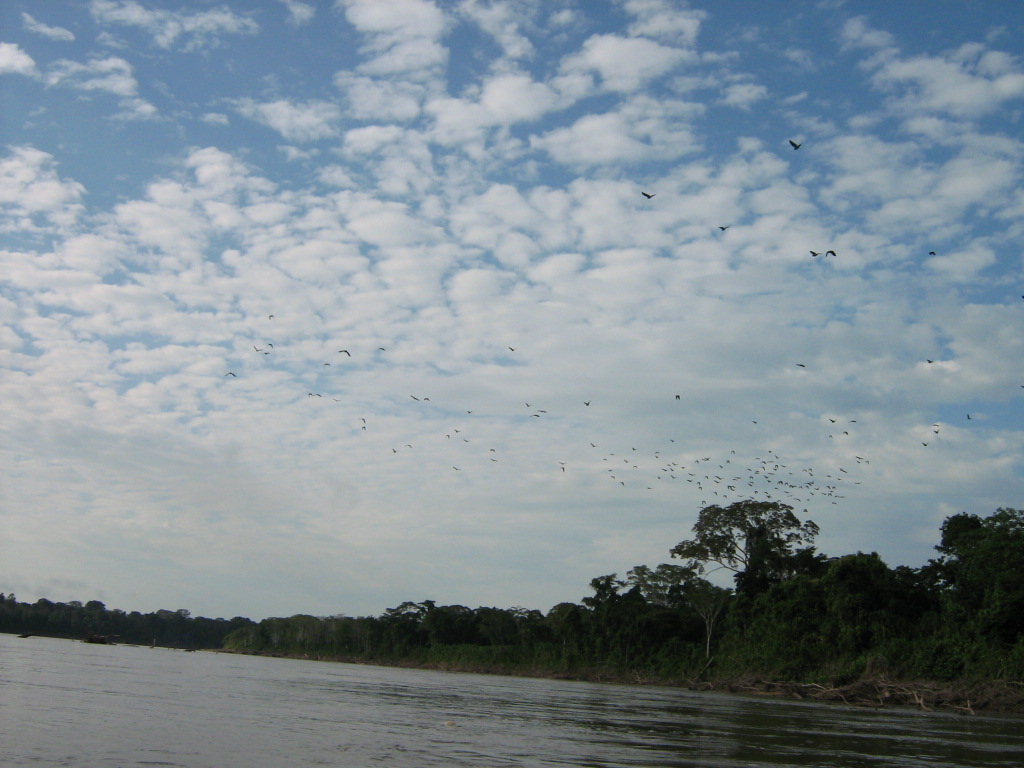
A flock of parrots flew overhead in the morning. They are very sociable as well as beautiful. I reached Boca Manu around noon. This is where Rio Madre de Dios is joined by Rio Manu, which carries much sediment and colors the water brownish yellow. The current also slows as the river widens. The sandbank where I camped that night is noticeably muddier. Many midge-like biting flies.
.
.
.
.
.
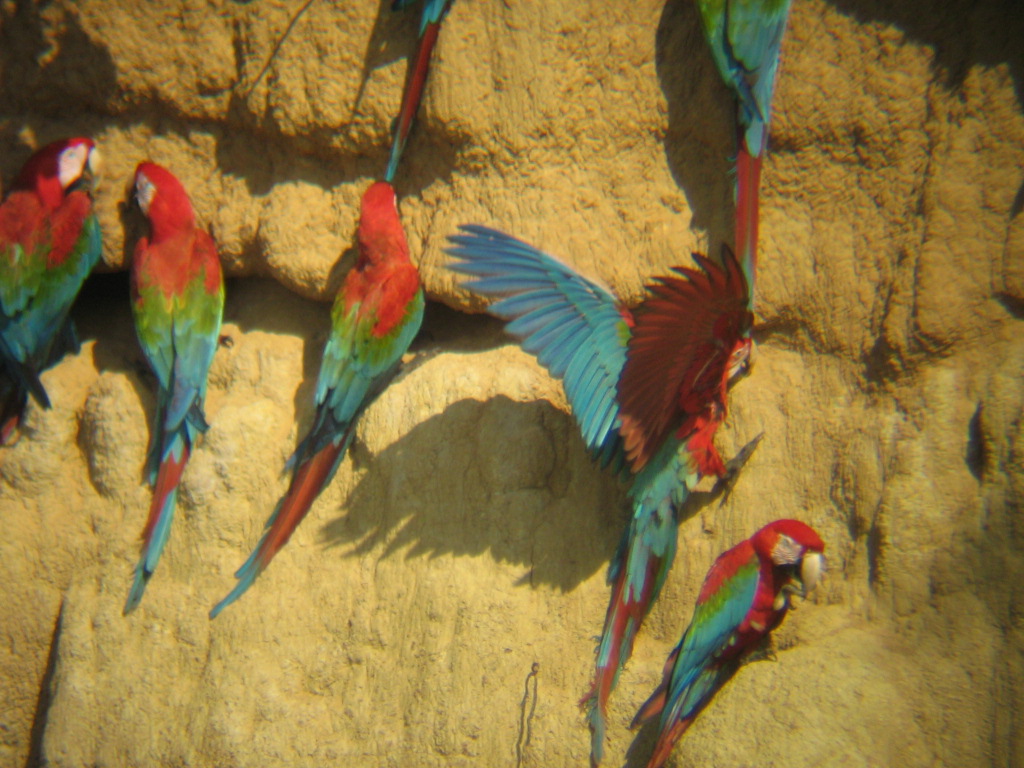
Rio Madre de Dios, Day 3
Macaws at a clay lick
I came upon some moored tour boats and learned from the boatmen of a bird clay/mineral lick nearby. The photo shows a group of macaws using the lick. I was told by one of the guides there that the parakeets and parrots arrive earlier in the morning to the lick, and then the macaws. Hawks apparently hunt there, though not when we were there. This lick has been well developed for tourism, with an observation deck built near it. The guides, with Inkanatura tour, did not mind my interloping, which I appreciate. The tours are typically arranged in Cuzco, and the clients (mostly from Europe and North America in this group) are flown to the airport near Boca Manu and then transported by boat to their lodge.
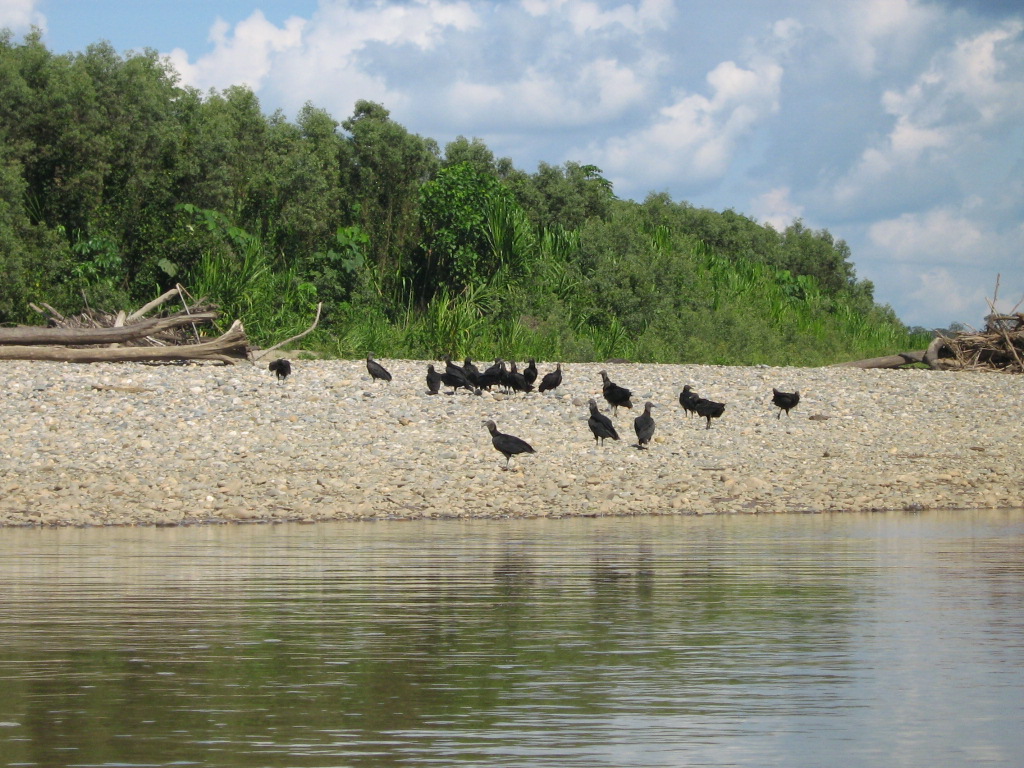
Vulture gathering on the river bank
Here the river flow is languid. Tree trunks of great size lie half submerged like guardian sentinels. I came upon a family of capybaras at a side channel of the river. The adults came crashing out of the bush into the water, bellowing deep grunts, perhaps to warn the youngsters on the other shore of danger. A cayman slid silently from the river bank into the water. Caymans seem to prefer resting in cane fields. A pair of cat-sized creatures ambled beneath a log by the water. Except for biting flies, the wildlife on the river was not as abundant as I hoped -- possibly due to the increased human presence there.
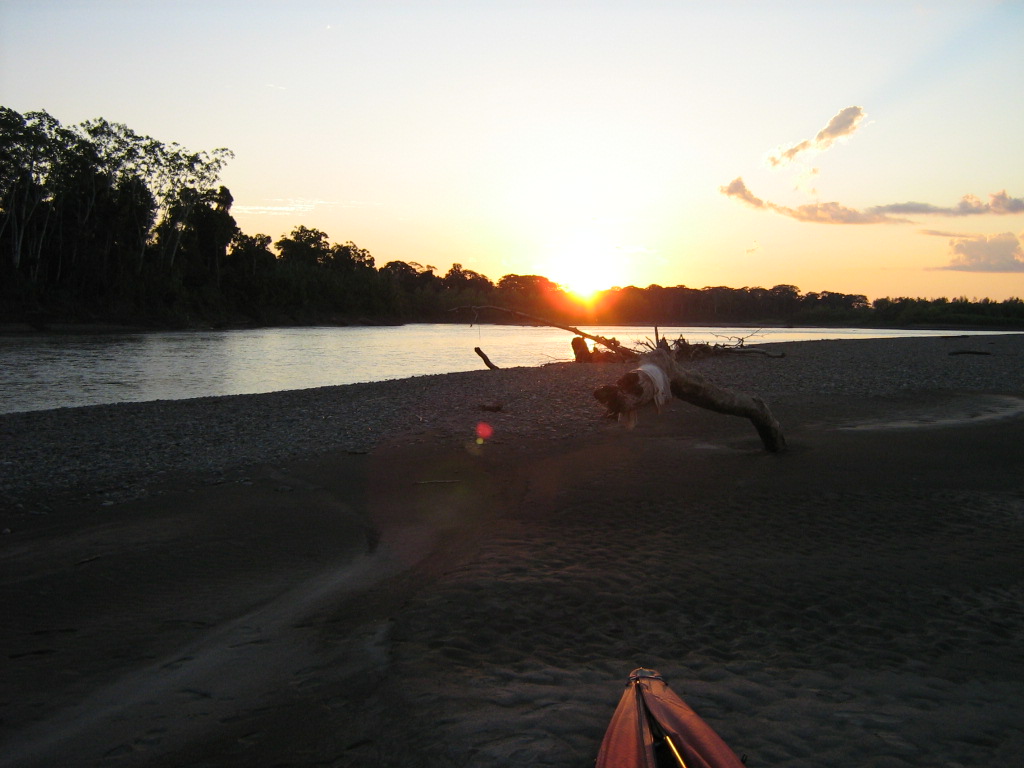
A lovely sunset over the sandbar
I camped at a sandbar midriver. In the morning, I noticed
the tracks of some animal near my campsite. Whatever it was, it seemed to have
4 toes on each paw and
could swim.
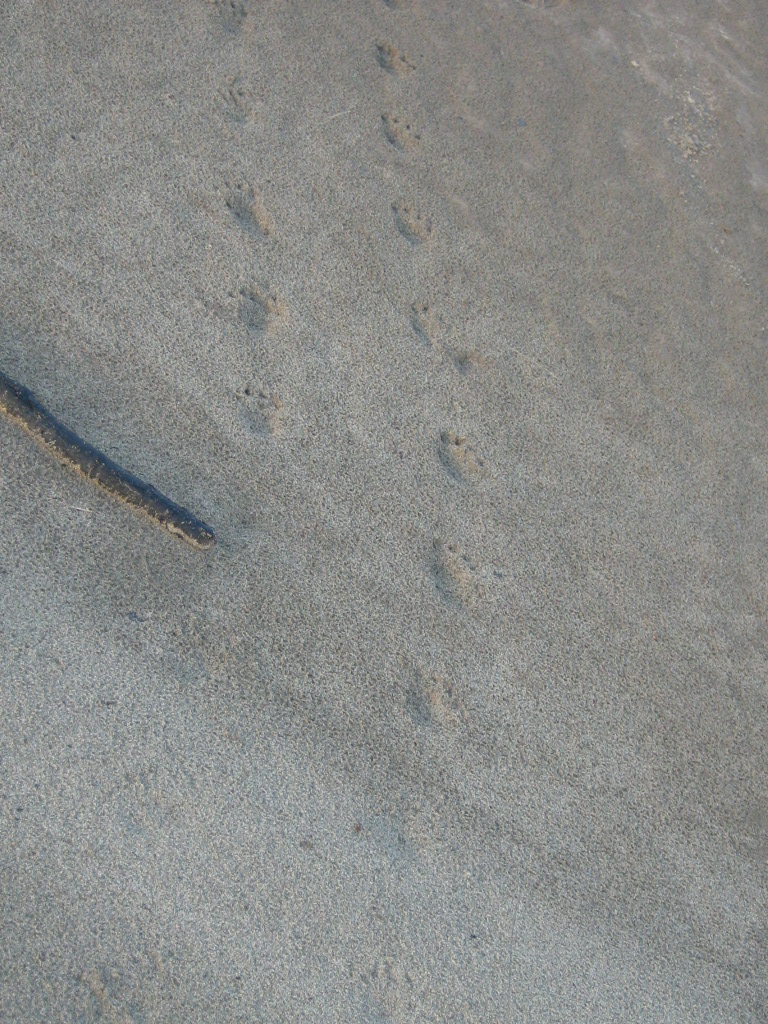
.
.
.
.
.
.
.
.
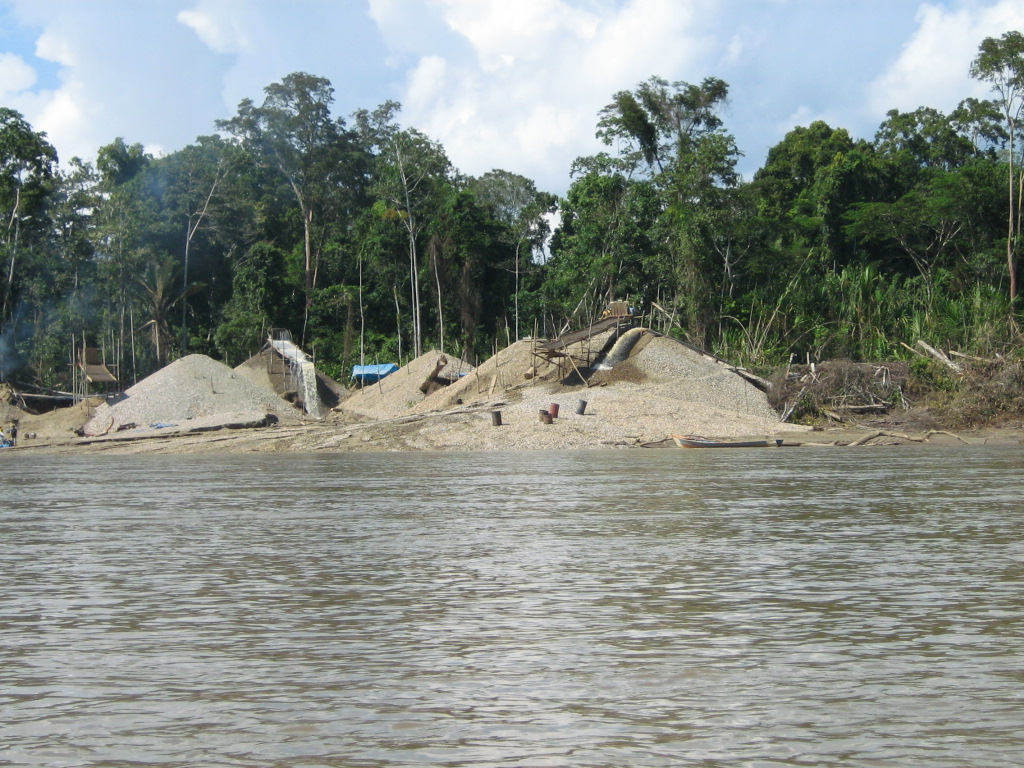
Rio Madre de Dios, Day 4
Gold mine
I stopped my kayaking trip in the village of Colorado, where Rio Colorado joins with Rio Madre de Dios. This is the first village since Puerto Atalaya that has road connection to the rest of Peru. Here the river widens even more and the current is very languid, almost as if in a lake. Gold mines begin to appear. They operate during the dry season when the water level is low enough to expose the ores. Mercury pollution is a serious concern. The increased human activities also mean less wildlife. And there were only 2 days left before my flight out of Lima. The village, which is not on any map, has a real frontier feel, with gold mining and logging (likely illegal) being the main source of income. Deforestation and mercury pollution are the unfortunate environmental threats. Bars/brothels cluster in one corner of the village.
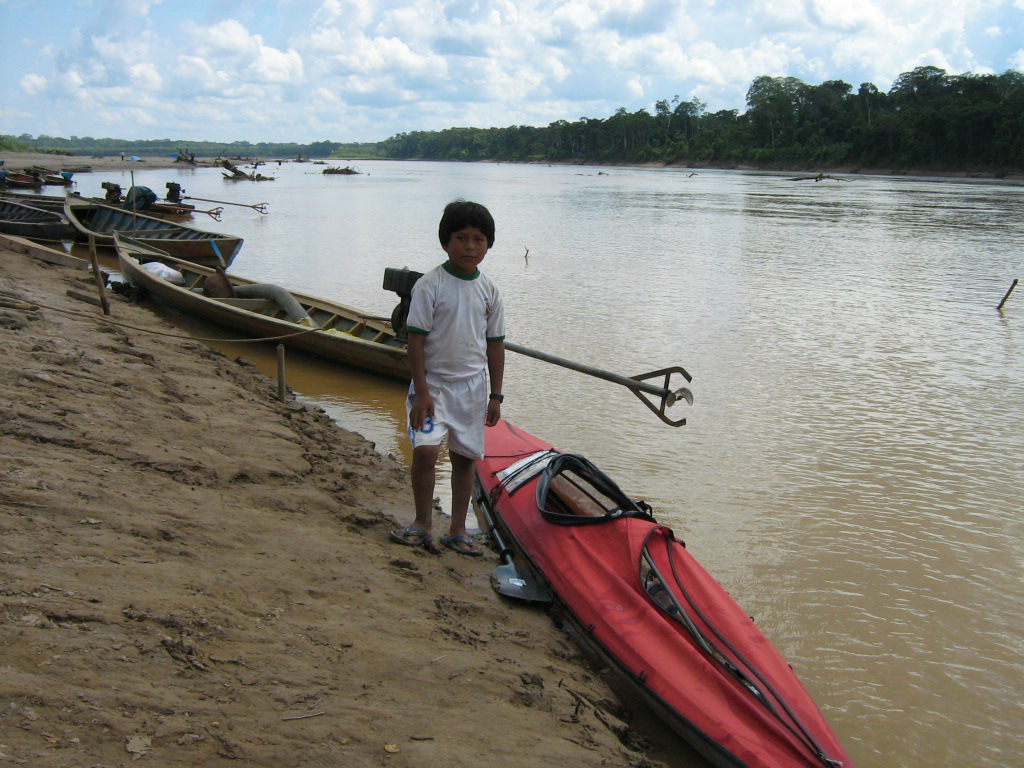 Rio Madre de Dios, Day 4
Rio Madre de Dios, Day 4
Arriving in Colorado
Some technical info: The kayak I used is the FirstLight 480, which fits snugly
(along with a PDF, bivy sack, small sleeping pad, clothing, etc.) into
a Canyon Pack dry bag (with lumbar belt) made by Seattle Sports.
The remainder of my belongings (maps, guidebook, pocket dictionary, repair kits, first aid,
camera, headlight, etc.)
went into a small dry bag. I used a 2-piece fiberglass Epic paddle.
The paddle and the kayak were the check-in luggages on my flights.
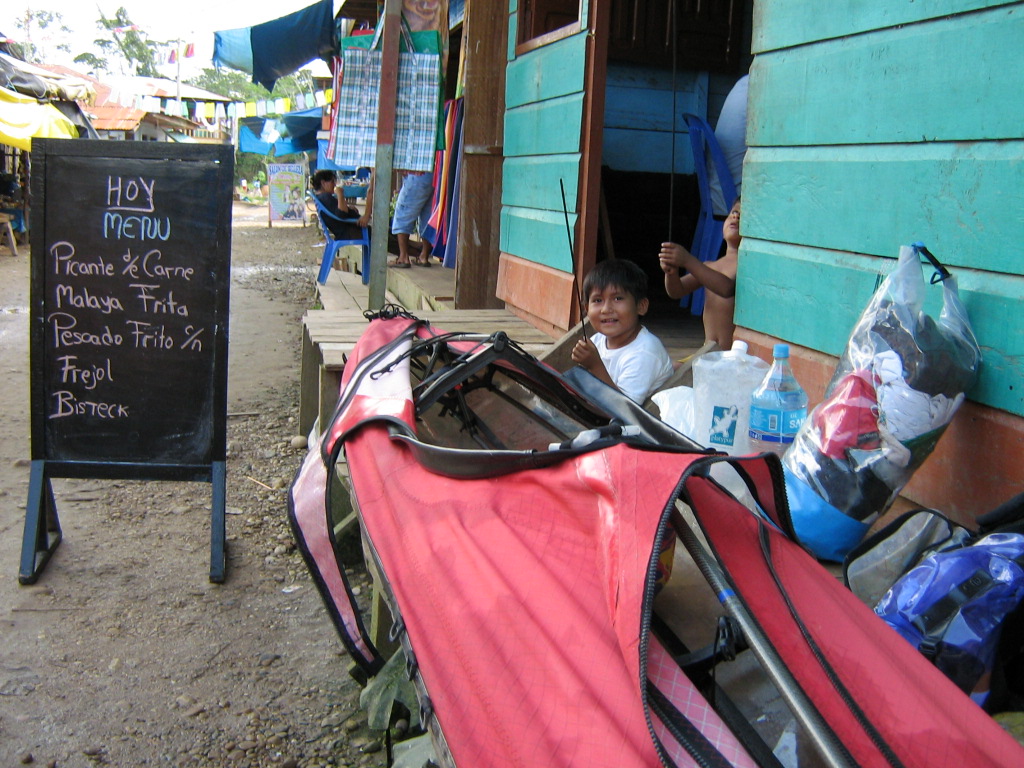
Children playing with kayak parts
I stayed overnight in Colorado at a hospedaje, in possibly the softest mattress
in the world, concaving down in the middle cup-like. The TV downstairs blared out
some kungfu movie/show (dubbed in Spanish) until around 9, after which a group of rats
emerged to raid anything with food smell.
Good thing I had my waterproof bags in which foods can be sealed airtight.
Next morning I caught a collectivo (shared taxi) for Puerto Carlos on the Rio Inambari
(2+ hrs, on unpaved dirt/gravel road), crossed the river on one of the motor launches, and
caught another collectivo for Puerto Maldonado (3 hrs on gravel roads that are in the process
of being paved), the main city in the Madre de Dios department and
the nearest airport with regular flight to Lima.
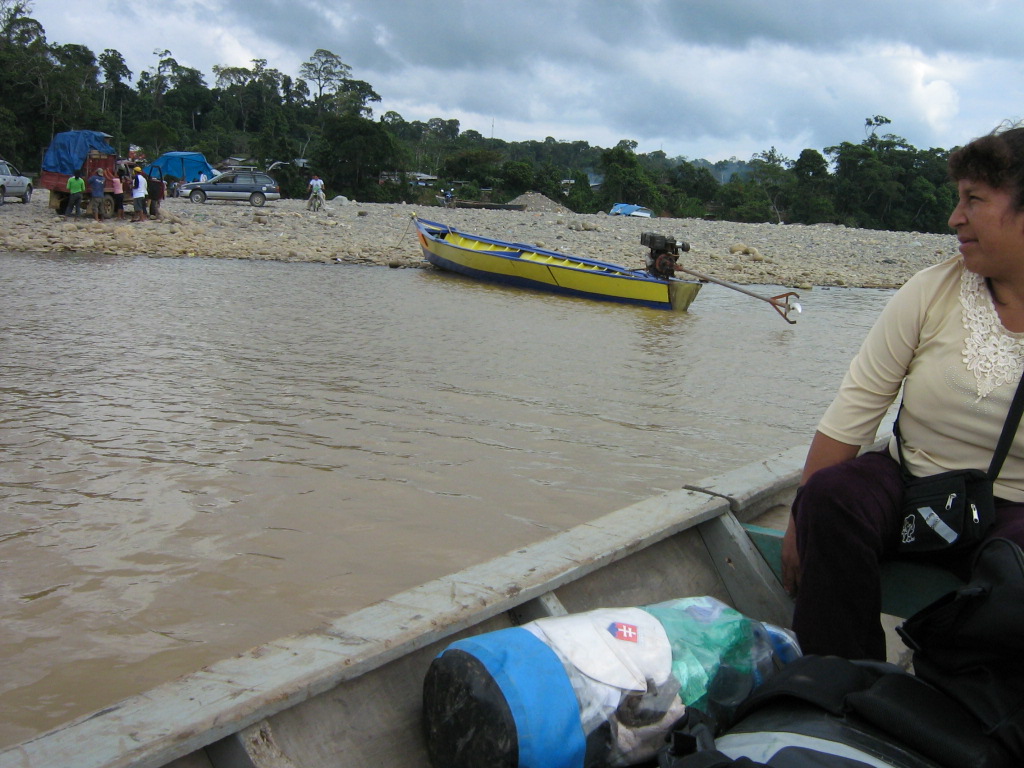
Puerto Carlos
Crossing Rio Inambari
.
.
.
.
.
.
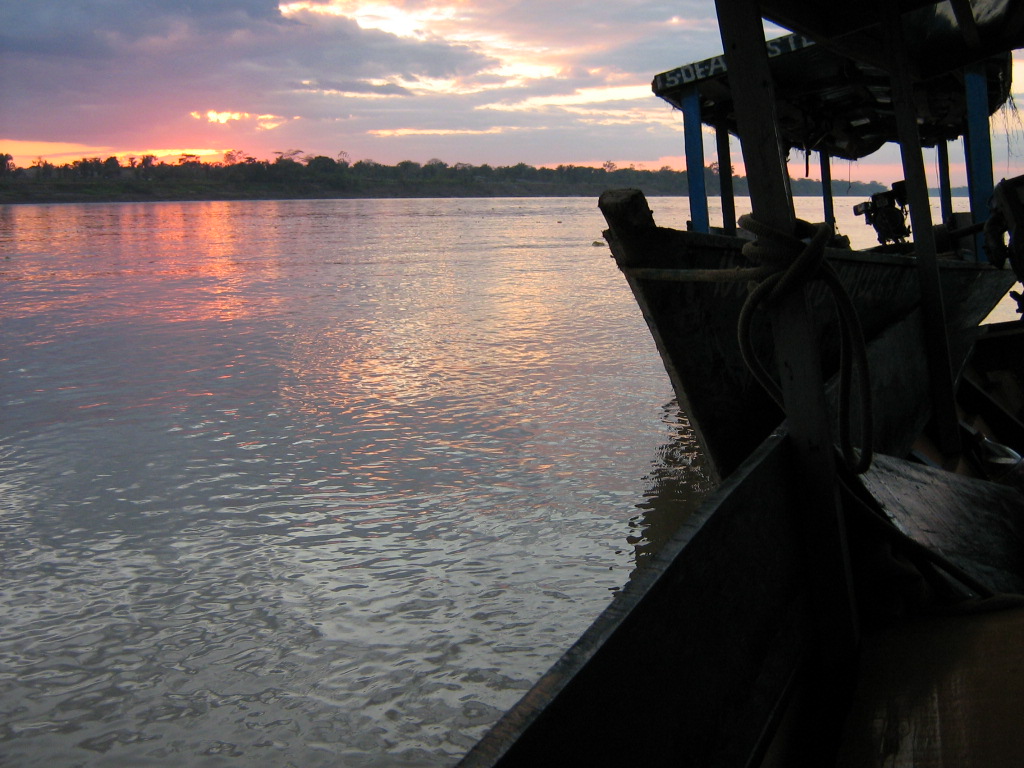
Puerto Maldonado
Sunrise over Rio Madre de Dios
Puerto Maldonado is the largest city (actually, it feels more a town than a city) along the Madre de Dios river. The first bridge is being built over the river to connect with Brazil and Bolivia, so human impact on this part of the Amazons will only increase. Some 2 hours down river from Puerto Maldonado is the Taricaya center for wildlife conservation and education. A boatman Victor proposed to take me there for a day trip. Animals and birds are being cared for there before release back into the wild. At the time of my visit, a jaguar, a tapir, a wild pig, spider monkeys, macaws were among the guests. A demonstration farm aims to switch locals from logging to sustainable farming. An observation platform above the forest canopy is reachable by a suspension bridge. Hopefully a growing eco-tourism will help with conservation efforts.
.
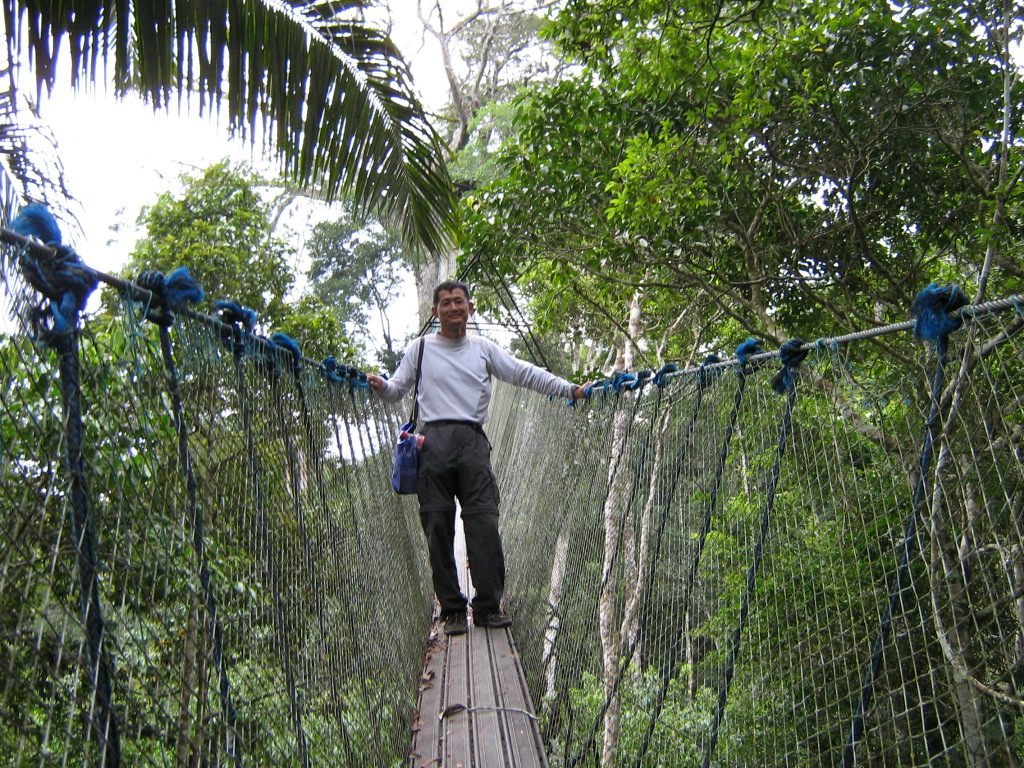
.
.
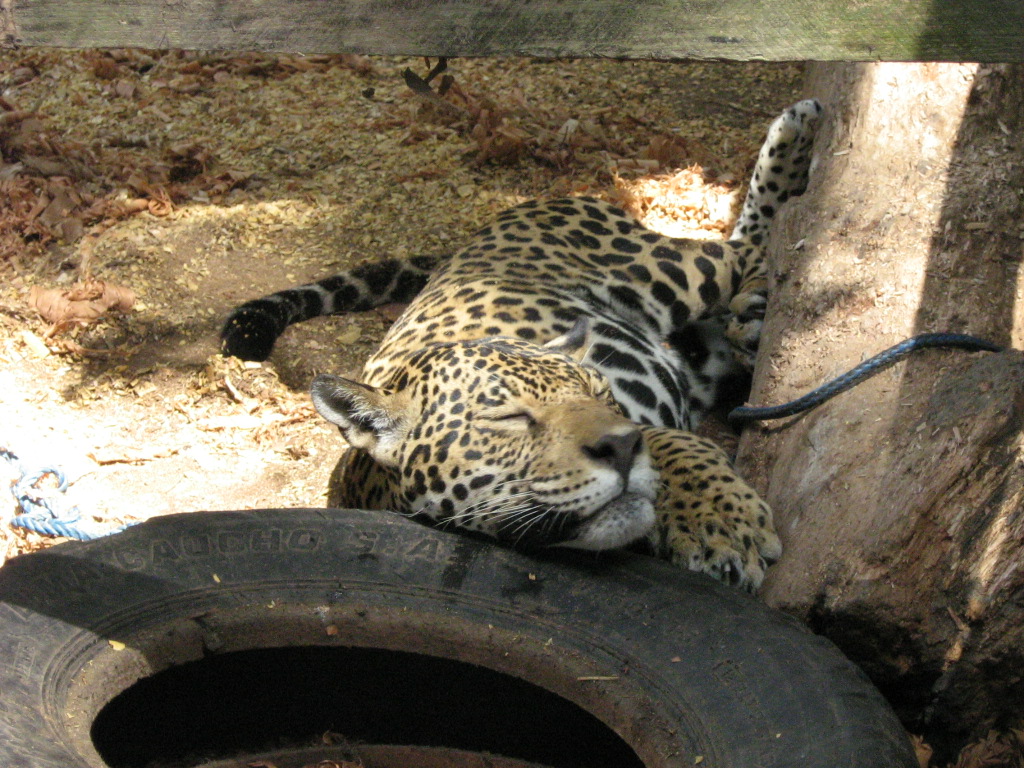
A young Jaguar at the Taricaya center
.
.
.
.
.
.
Further up river we visited a native village, where an elder of the Eja
tribe explains to visitors their traditional ways of life -- first in their
own language and then in Castellano/Spanish. The clothe he wore was
made of beaten tree bark. Less traditional was their
selling of souvenirs, though I could not resist buying one
(a well worn head-band made of beaten tree bark and decorated with macaw tail feathers).
Next day, I caught the second of the two daily LAN flights to Lima, and made my connection back
to Seattle. Air travel in Peru is far from predictable.
The first flight was delayed for 10+ hours and arrived in Lima 7 hours after my flight!
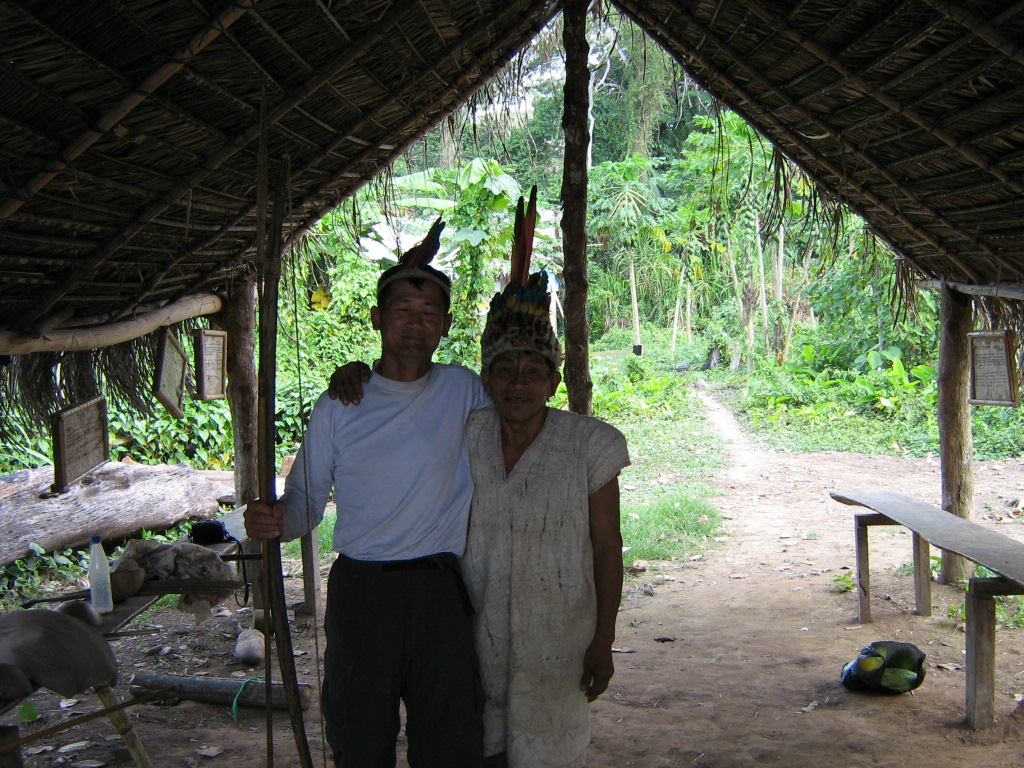
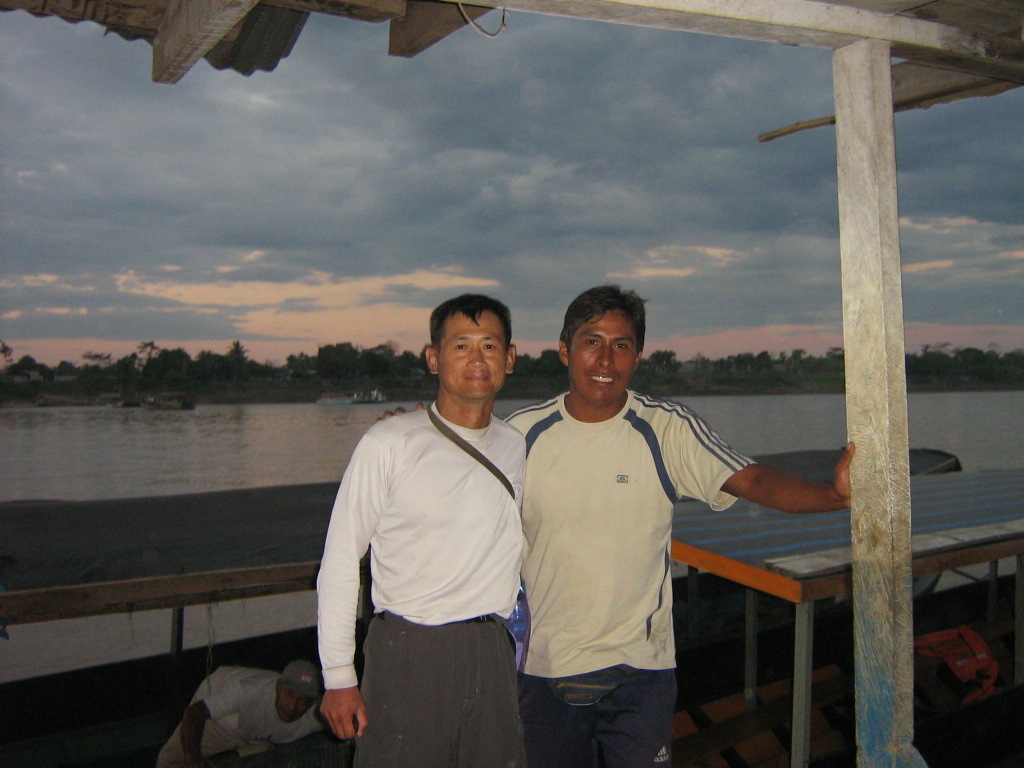 With Victor in Puerto Maldonado
With Victor in Puerto Maldonado
.
.
.
.
.
.
.
This poster against sexual exploitation of children was on a wall in
the hostel where I stayed in Puerto Maldonado (Hostal Moderno, near the port).
There was another poster
announcing a recent workshop on child protection. Peru seems to be more
pro-active in promoting awareness than some other developing countries.
Between loud American movies shown on the bus ride
from Lima to Cuzco are public awareness notices against sexual
exploitation of children.
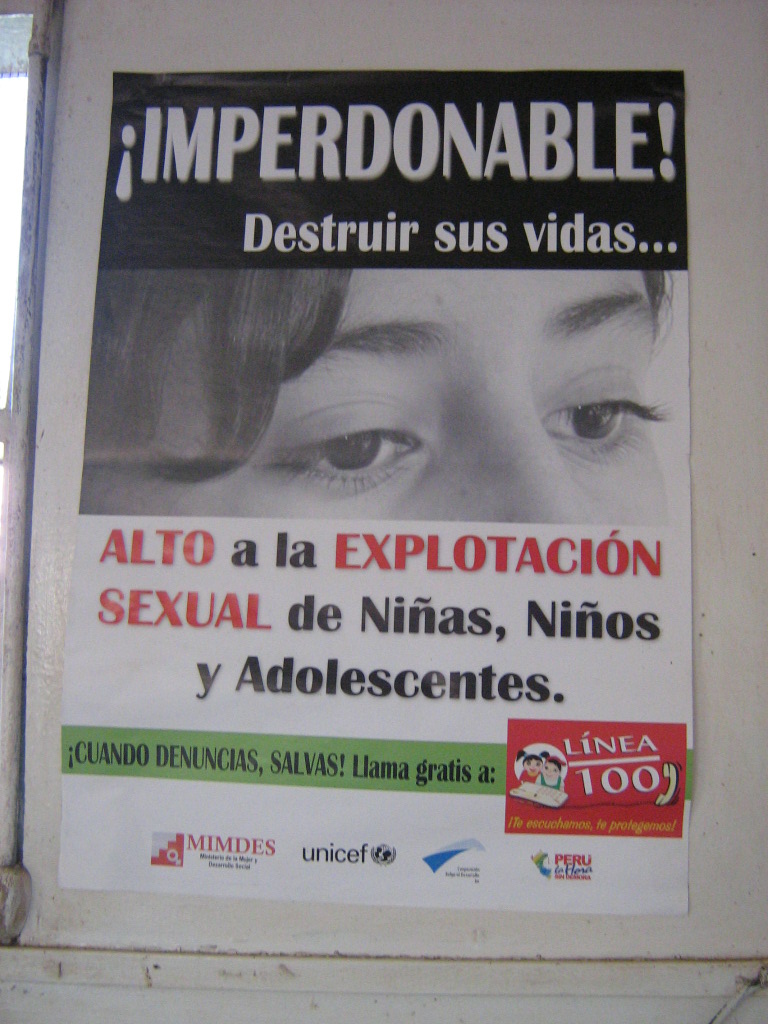
.
.
.
.
.